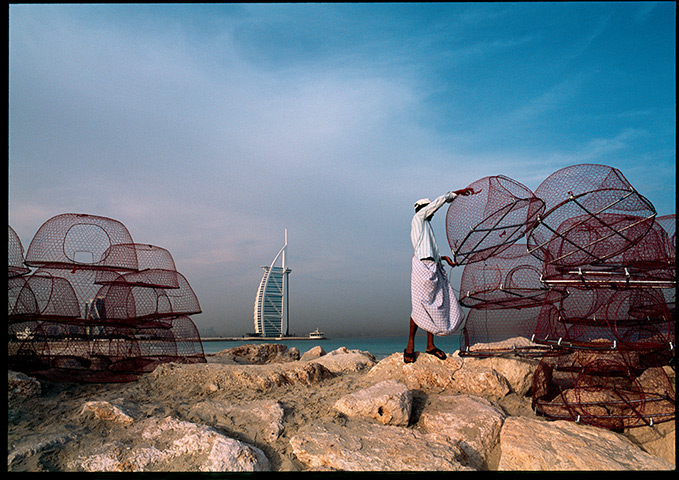
Old and new juxtaposed in the Middle East: a worker stacks fish traps, as inhabitants of the Persian Gulf have done for centuries, while Dubai’s Burj Al Arab luxury hotel rears skyward in the distance. The soaring cities of Abu Dhabi and Dubai, which also boasts the tallest building in the world as of 2013, the Burj Khalifa, did not exist in 1960, when they were just sleepy, whitewashed desert ports. Photograph: Maggie Steber/National Geographic
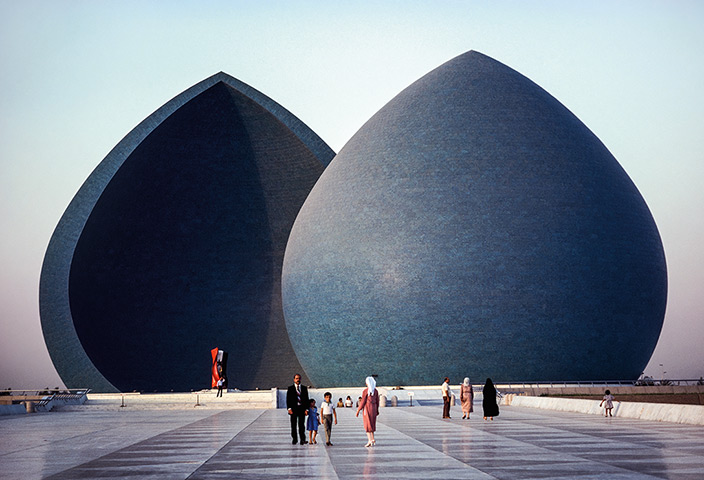
Baghdad’s al-Shaheed Monument, with its eternal flame, commemorated the Arab victory over Persia at al-Qadisiyyah in 637AD. Saddam Hussein invoked that battle in 1980, before invading modern Persia, Iran. After the Iran-Iraq war ended in 1988, the monument also came to honour nearly 500,000 Iraqis killed in that conflict, in which not an inch of territory ultimately changed hands. Photograph: Steve McCurry /National Geographic
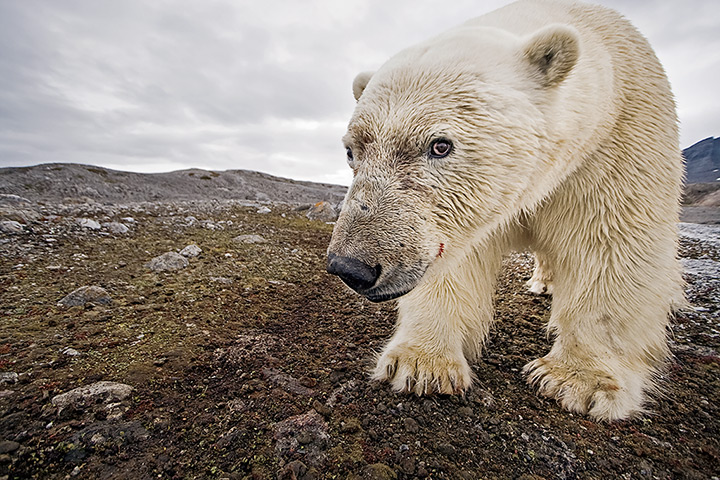
A young male polar bear investigates a camera trap. Some campers have come to a bad end after awaking to such as sight, as the dangerous animals are plentiful on this sparsely populated, Norwegian-administered island, only 600 miles from the North Pole. People who live there are required by law to carry a firearm for protection whenever they venture outside the limits of Longyearbyen, the principal settlement. Photograph: Paul Nicklen/National Geographic
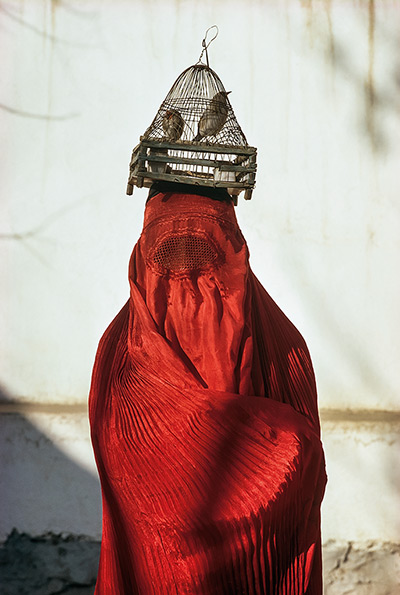
Swathed in a silk chador, the pleats of which echo a style centuries' old, an Afghan woman returns from a Kabul market having bought not pomegranates, lemons, or plums but a pair of caged goldfinches, which would be kept as pets for their pleasing melodic song. Photograph: Thomas J Abercrombie/National Geographic
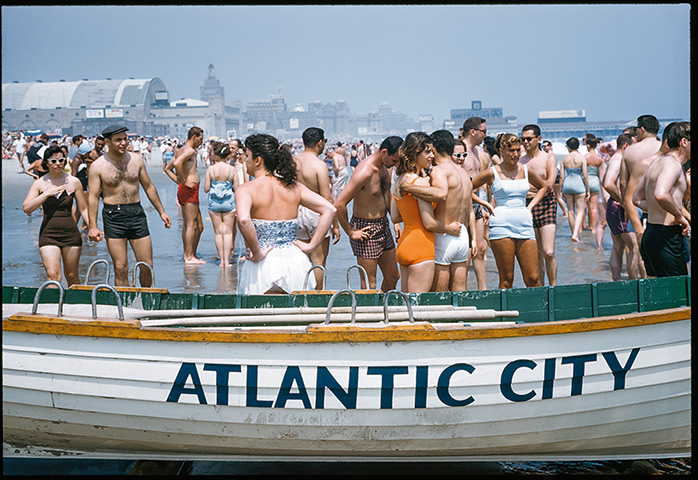
A summer weekend at Atlantic City sees surging crowds mobbing the narrow strip of sand between the boardwalk and the sea. The lifeguard boat (in the foreground) is more than just a prop: according to the July 1961 issue, some 1,200 bathers were rescued from the water off Atlantic City each summer. Photograph: Volkmar K Wentzel/National Geographic
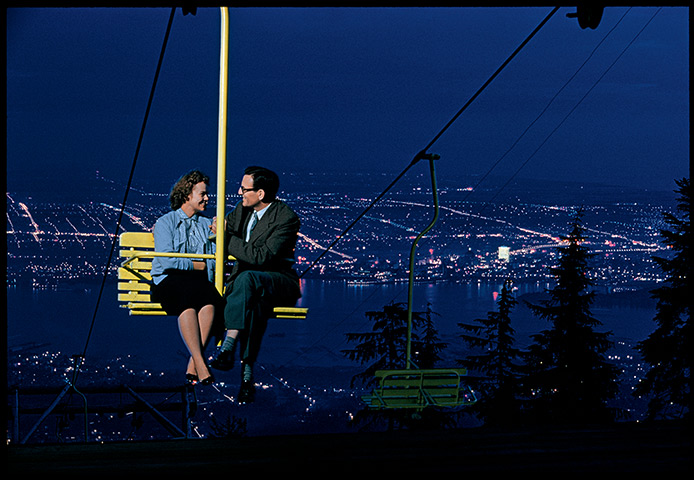
All eyes for each other, though Vancouver lies glittering beneath them, a couple ride a double chairlift to the top of Grouse Mountain. The ride back down, however, was, according to Boyer, like “parachuting into a valley of jewels. If there are more breathtaking nocturnal cities or ways to see them, I have yet to find them.” Photograph: David S Boyer/National Geographic
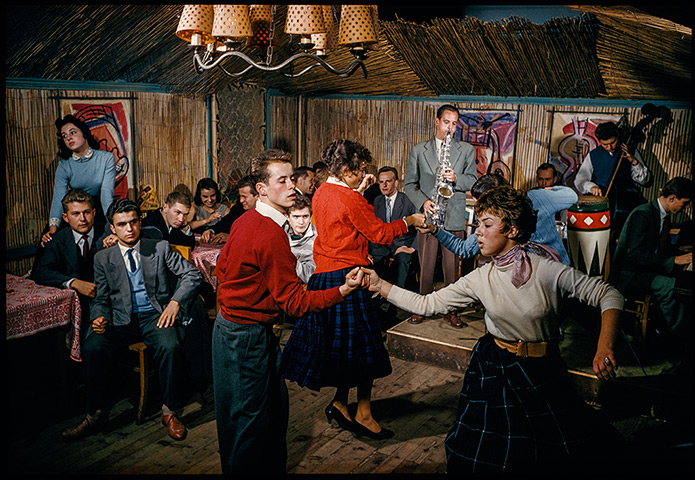
Students at the University of Vienna dance to a jazzy version of Bésame Mucho in their cosy Studentkeller. Their carefree attitude reflects a city that had struggled back from the ravages of the second world war and the years of allied occupation. “The siege had been lifted,” wrote Beverly Bowie in the February 1959 Geographic. “Austria was free to be herself.” Photograph: Volkmar K Wentzel/National Geographic
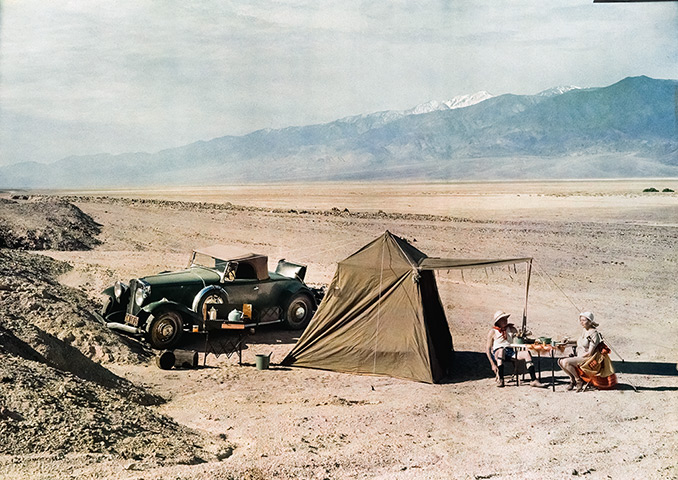
On mild winter weekends suburbanites might enjoy the view of snow-capped Telescope Peak (in the Panamint range) while camping in Death Valley, once a byword for desolation. “Planes, trains and motors, of course, have robbed the desert of its dreads,” wrote Fred Simpich in the November 1934 issue. “The sting has been taken out of Death Valley completely by modern transport.” Photograph: B Anthony Stewart/National Geographic
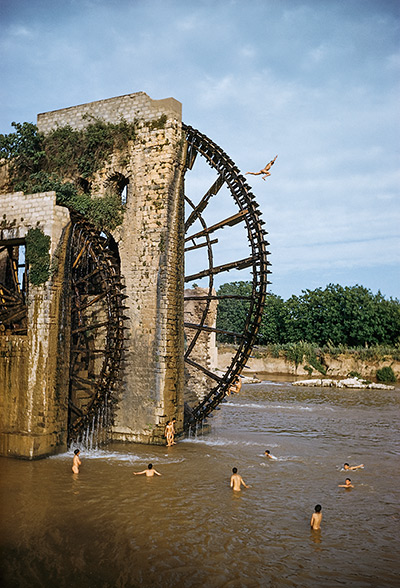
Youths make an improvised diving platform out of a giant old water wheel, or noria, which supplied the houses, gardens and mosques of Hama, western Syria, with water from the Orontes river. More than 30 of these wheels, which date from medieval times, once lined the river, their creaking noises audible miles away. Photograph: David S Boyer/National Geographic
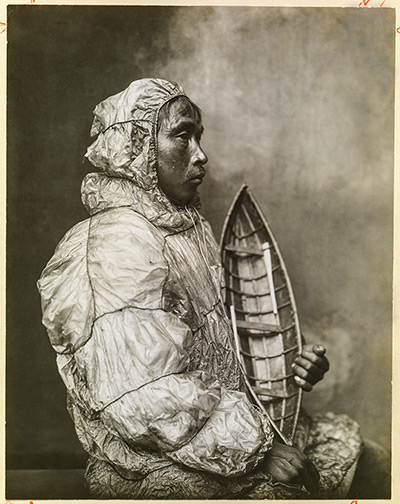
Holding a model umiak, or canoe, an Eskimo poses in a coat made of walrus intestine – air-cured, sliced, and sewn together with waterproof stitches. Photograph: Carl Lomen/National Geographic
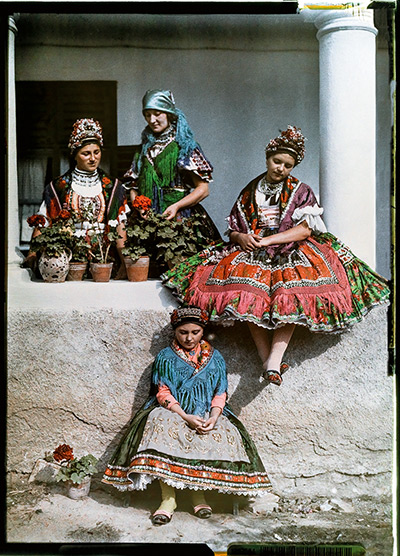
Girls from the town of Decs in characteristic pleated dresses, layered petticoats, embroidered aprons, figured bodices and fringed shawls. Many ethnic groups in the region were famous for their colourful costumes, and a 1932 feature entitled Rainbow Hues from Hungary noted that “rural districts of Hungary have resisted machine-made clothes better than most other parts of central and south-eastern Europe”. Photograph: Rudolf Balogh/National Geographic
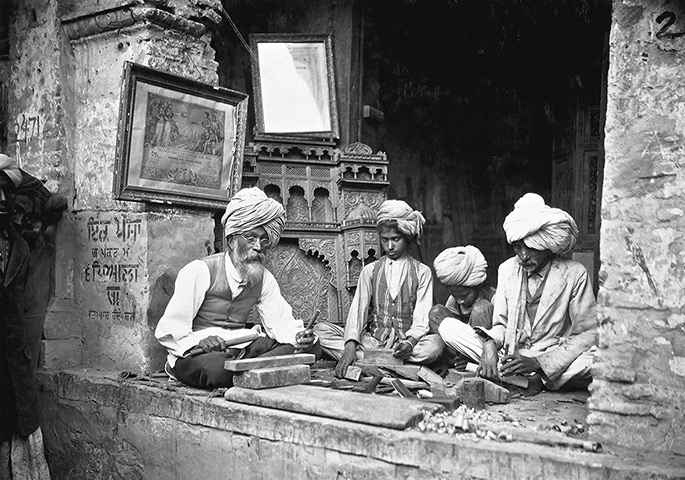
Turbaned woodcarvers work from a window in a street in Amritsar. The city, 20 miles east of Lahore on the Grand Trunk Road, is the spiritual home of the Sikhs and site of their resplendent Golden Temple. At Partition, Amritsar would fall on the Indian side of the border and, like Lahore on the Pakistani side, would see religious riots and mass emigration back and forth across the new frontier. Photograph: Maynard Owen Williams/National Geographic
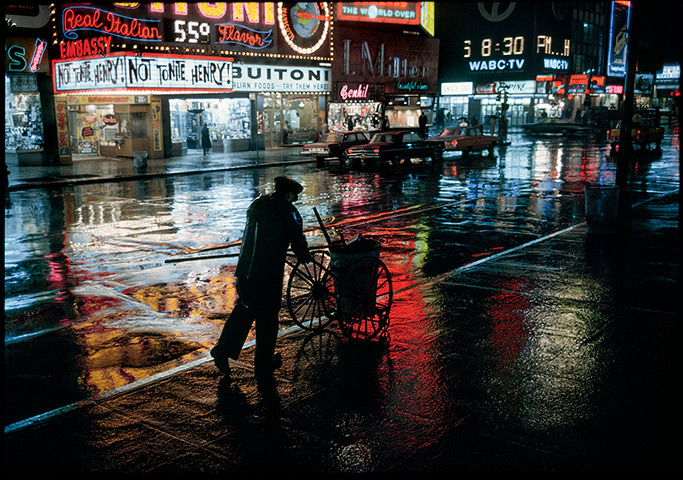
Times Square looks deserted on a rainy January evening, the reflection of its neon lights interrupted only by a street sweeper. Perhaps everyone has crowded into the nearby cinema to watch Not Tonite, Henry, a 1960 pornographic feature about a sexually frustrated husband seeking solace in a fantasy life, including lascivious encounters with some of the more famous women in history. Photograph: Thomas Nebbia/National Geographic
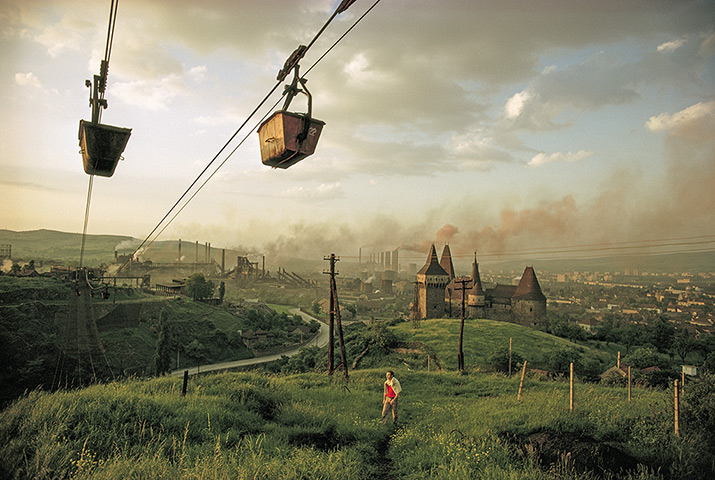
Buckets of iron ore, swaying up the cables to a local steelworks, have helped make Hunedoara, an old Transylvanian town, the leading steel producer not only in Romania but in the entire Balkans. Yet the region’s diverse inhabitants – including Romanians, Hungarians, Germans and Gypsies – have often suffered under a burden of oppression and misrule. Photograph: Winfield Parks/National Geographic
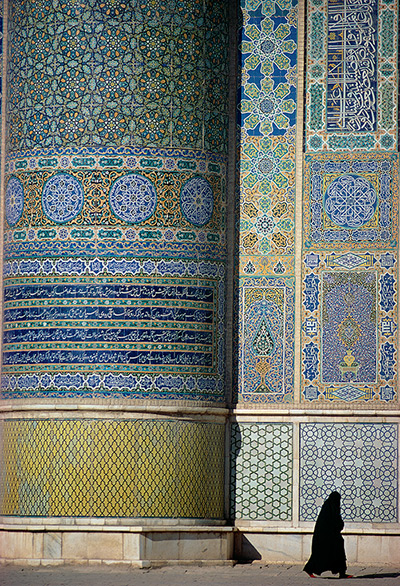
Intertwined arabesques and verses from the Koran overspread every inch of the Jama Masjid, or Great Mosque, in the western city of Herat. “Portraits of infinity,” the July 1972 Geographic called them. “Abstract patterns that can be multiplied forever pervade Islamic art.” Photograph: Thomas J Abercrombie/National Geographic







